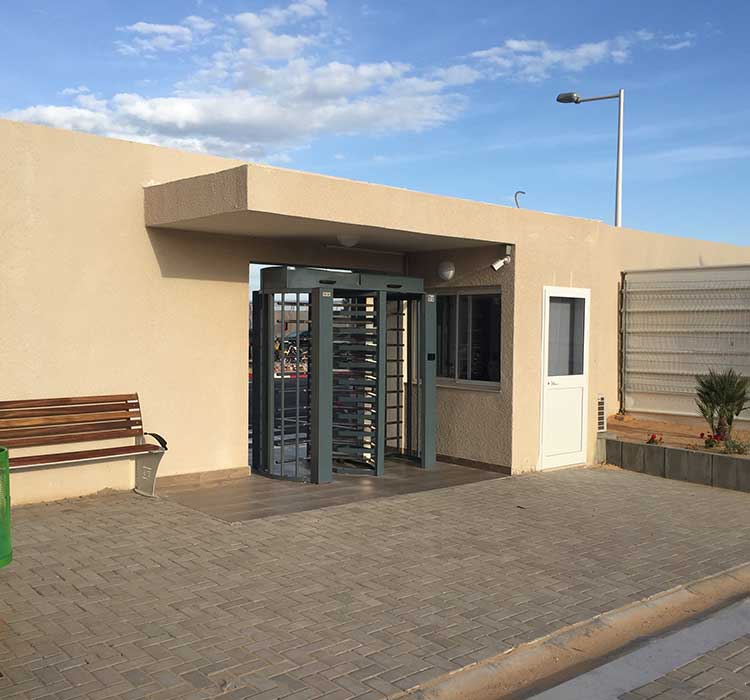In an era marked by increasing concerns about security, the protection of public spaces has become paramount. From airports to stadiums, from train stations to amusement parks, ensuring the safety of visitors and staff is a top priority. In this pursuit, turnstiles have emerged as indispensable components of security systems. This article delves into the role of turnstiles in securing public spaces, examining their effectiveness and the latest advancements in the field.
The Importance of Securing Public Spaces
Public spaces are inherently vulnerable to security threats due to their open accessibility and high foot traffic. Incidents ranging from petty theft to acts of terrorism underscore the need for robust security measures. Moreover, the perception of safety influences people’s willingness to visit and spend time in public areas, impacting economic activities and societal well-being.
Enter Turnstiles: Guardians of Access Control
Turnstile serves as the first line of defense in controlling access to public spaces. These gate-like structures restrict entry to one person at a time, effectively monitoring and regulating the flow of individuals. By enforcing a single-file passage, turnstiles deter unauthorized access and mitigate the risk of overcrowding, facilitating crowd management in congested areas.
Enhanced Security through Turnstile Technology
The evolution of turnstile technology has led to the development of advanced security features that augment their effectiveness in safeguarding public spaces. Leading turnstile suppliers offer a diverse range of products tailored to meet specific security requirements.
LPS 1175 Terra Diamond Turnstile: Fortifying Perimeter Security
One notable innovation in turnstile design is the LPS 1175 Terra Diamond Turnstile, engineered to withstand forced entry attempts. Constructed from high-strength materials and equipped with anti-climb barriers, this turnstile provides robust perimeter security, making it ideal for installations where intrusion prevention is paramount.
LPS 1175 Platinum Turnstile B3: Balancing Security and Accessibility
For public spaces that prioritize both security and convenience, the LPS 1175 Platinum Turnstile B3 offers an optimal solution. Combining a high level of security with smooth operation, this turnstile ensures seamless access control without compromising user experience. Its adaptable design allows integration with various access control systems, enhancing compatibility and versatility.
FPT1 Full Height Turnstile: Restricting Access with Unyielding Vigilance
In environments requiring maximum security, such as prisons and high-security facilities, the FPT1 Full Height Turnstile stands as an imposing barrier against unauthorized entry. With its towering height and robust construction, this turnstile provides an impassable obstacle, effectively deterring intrusion attempts and maintaining strict access control.
Collaborating with Trusted Security System Suppliers
Effective implementation of turnstile-based security systems necessitates collaboration with reputable security system supplier. These partners offer expertise in designing, installing, and maintaining turnstile solutions tailored to the unique needs of each public space. By leveraging their knowledge and resources, organizations can ensure the seamless integration and optimal performance of turnstile systems.
The Importance of Turnstiles in Public Space Security
As the focal point of access control systems, turnstiles play a pivotal role in fortifying the security of public spaces. Their significance extends beyond mere physical barriers; turnstiles serve as symbolic guardians, instilling a sense of order and safety among occupants. Let’s delve deeper into the importance of turnstiles in public space security:
1. Effective Crowd Management:Turnstiles facilitate orderly entry and exit of individuals, enabling efficient crowd management in high-traffic areas. By regulating the flow of people, turnstiles prevent congestion and minimize the risk of stampedes or trampling incidents, ensuring the safety of visitors and staff.
2. Deterrence Against Unauthorized Access:The presence of turnstiles acts as a visual deterrent to potential intruders, discouraging unauthorized access to restricted areas. The imposing structure of turnstiles conveys a clear message of security vigilance, deterring individuals with malicious intent from attempting to breach perimeter boundaries.
3. Enhancing Perimeter Security:Turnstiles serve as robust barriers, fortifying the perimeter security of public spaces against intrusion attempts. Models like the LPS 1175 Terra Diamond Turnstile offer unparalleled resistance to forced entry, providing a formidable defense against external threats and unauthorized incursions.
4. Integration with Access Control Systems:Turnstiles seamlessly integrate with access control systems, enabling precise control over who enters and exits a premises. By incorporating authentication mechanisms such as RFID readers, biometric scanners, or ticket validators, turnstiles enforce access policies, ensuring only authorized individuals gain entry.
5. Customization for Specific Requirements:Turnstile suppliers offer a diverse range of products tailored to meet the unique security requirements of different public spaces. Whether it’s a bustling transit hub, a high-security government facility, or a leisure destination, turnstile solutions can be customized to align with specific operational needs and security objectives.
6. Operational Efficiency and Cost Savings:Implementing turnstile-based security systems enhances operational efficiency by automating access control processes. By reducing the need for manual oversight and streamlining visitor management workflows, turnstiles help organizations optimize resource allocation and achieve cost savings in the long run.
7. Fostering Public Trust and Confidence:The presence of turnstiles in public spaces signals a commitment to safety and security, fostering trust and confidence among visitors and stakeholders. When individuals feel assured of their well-being, they are more likely to engage in social activities, patronize businesses, and contribute to vibrant communities.
Conclusion
In an increasingly interconnected world, securing public spaces is a multifaceted challenge that demands innovative solutions. Turnstiles, as integral components of modern security systems, play a crucial role in safeguarding public areas against potential threats. From deterring unauthorized access to enhancing crowd management, turnstiles contribute to creating safer environments for everyone. By embracing the latest advancements in turnstile technology and partnering with trusted suppliers, organizations can effectively fortify the security of public spaces, fostering a sense of safety and well-being among visitors and staff alike.


